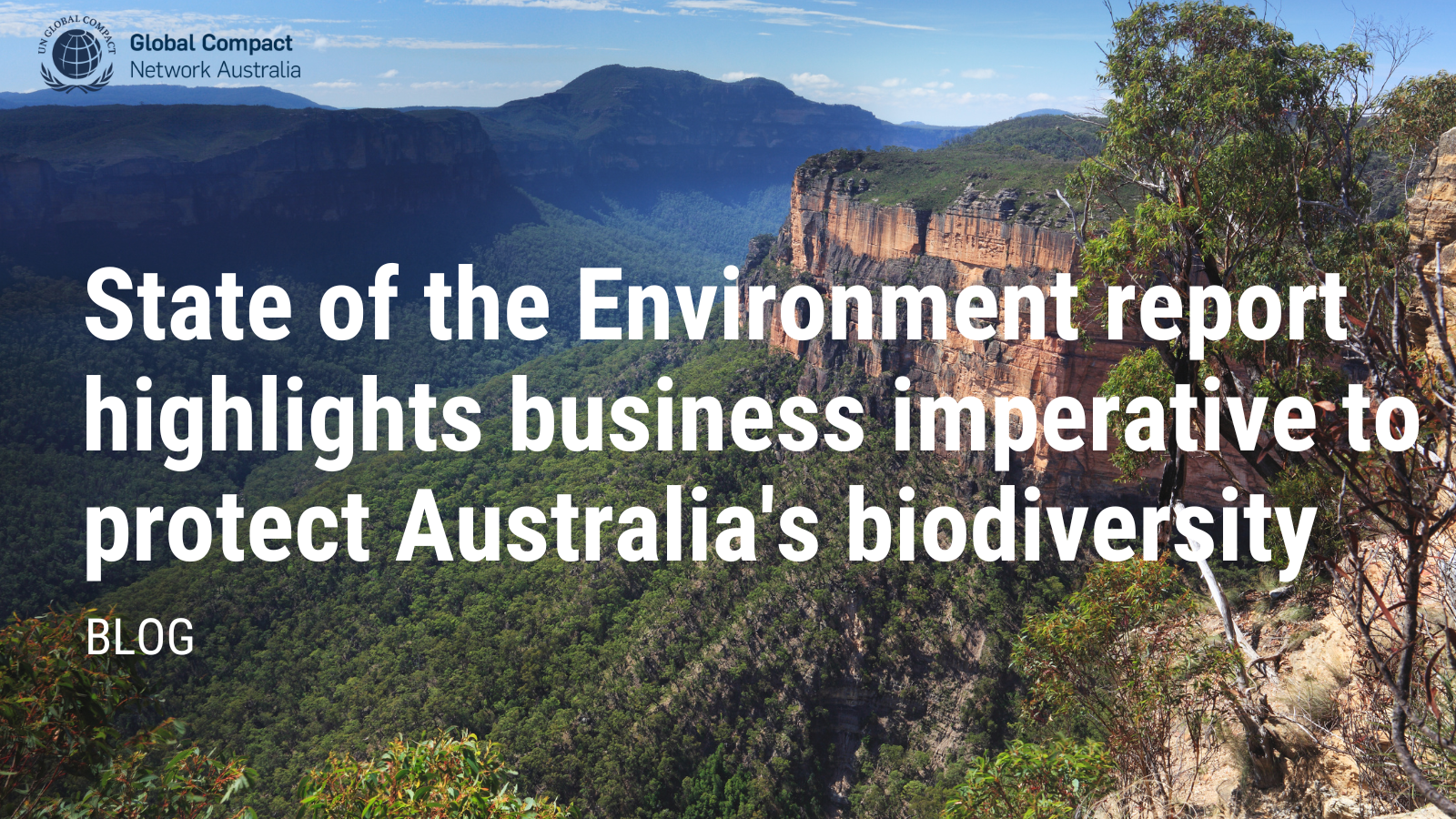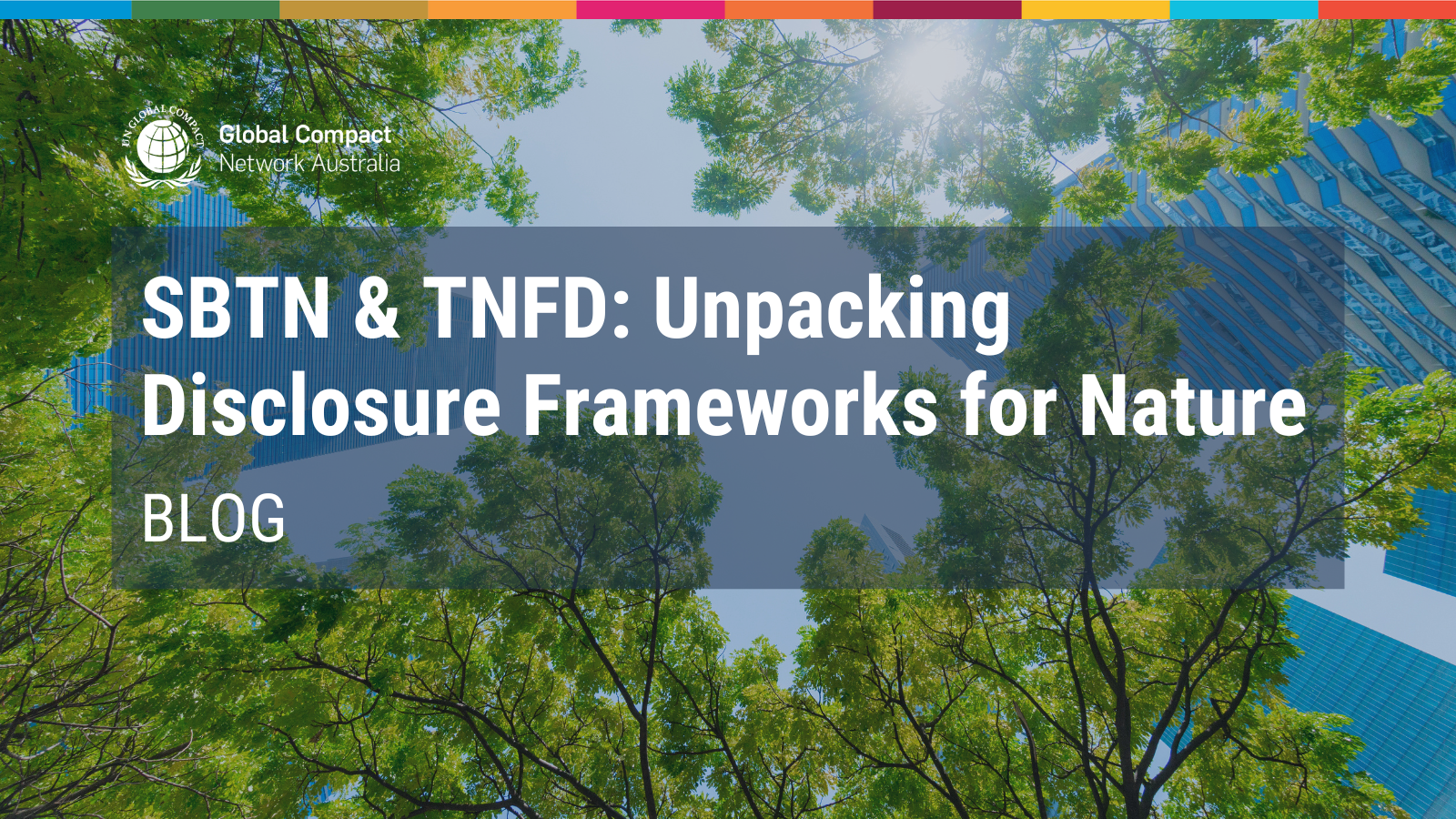
Blogs, Media, News, Environment & Climate Change, Featured
BLOG | State of the Environment report highlights business imperative to protect Australia’s biodiversity
Sarah Day | July 20, 2022
“The natural world is not separate from the human world – it is the source of our food, water, air and raw materials… In a rapidly changing climate, with declining biodiversity, the general outlook for our environment is deteriorating. The impacts of this will affect us all”.[1]
The State of the Environment report, released by the federal government this week, is a clear warning sign that Australia’s environmental degradation is being exacerbated by climate change, habitat loss, invasive species, resource extraction and pollution. The five-yearly report is an independent assessment examining the state of 12 key environmental and heritage issues[2] in Australia. Lead authors of the report included Dr Ian Cresswell (Research Director at CSIRO), Dr Terri Janke (leading Indigenous Cultural and Intellectual Property lawyer), and Professor Emma Johnston (Deputy Vice-Chancellor (Research) at the University of New South Wales).
The report highlights the strong link between the environment and human health, including how environmental degradation can affect our communities, our livelihoods, and the economy. Whilst the results are stark, there is still a small window to affect change. The private sector can play a powerful role in shifting the dial to more nature-positive outcomes.
Some of the key findings include:
- Australia’s biodiversity is under significant stress. Since 2016, more than 200 plant and animal species have been listed as threatened, including the koala. Australia has lost more mammal species than any other continent in the world, and we now have more introduced plant species than native plant species
- Land clearing is a key contributor to biodiversity and habitat loss, with more than 6.1 million hectares of mature forest cleared since 1990
- At least 19 ecosystems are showing signs of collapse or near collapse. These ecosystems are crucial for promoting food chains, providing habitats for animals, and controlling ecological cycles and processes
- Marine heatwaves have led to mass coral bleaching events in the Great Barrier Reef. Ocean acidification (carbon dioxide absorbed from the atmosphere) is nearing a tipping point that will lead to further marine ecosystem decline
- Climate change is also a major contributing factor to Australia’s environmental deterioration. Average land temperatures in Australia have increased by 1.4°C above pre-industrial levels, and extreme events such as floods and bushfires are increasing in frequency and severity
- The Black Summer was one of the worst fire seasons on record, with between 1 to 3 billion animals killed or displaced. More than 480 threatened plants, 20 mammals and 16 frog species require urgent management intervention after the fires
- Degradation of Indigenous heritage is occurring at an unacceptable rate, with a lack of appropriate access to finance and other critical support needed to adequately protect these areas. The report emphasises the importance of Indigenous knowledge in repairing the sustainability of Australia’s natural environment and highlights the significant effort required to address mounting environmental and heritage issues
The conservation of biodiversity is a critical pillar of sustainable development. Maintaining diverse biological systems is fundamental to ensuring a healthy planet and people. Despite the sobering findings, experts say it’s not too late to turn this environmental decline around. However, this issue is time critical, and we have a very small window to respond. To address the twin challenges of climate change and biodiversity loss, we need significant investment, innovation, clear market mechanisms, collaboration with Indigenous and local communities to co-develop solutions, and partnerships between government, civil society, academia, and business.
What do the findings mean for the private sector?
As well as putting people’s health and our ecosystems at risk, a deteriorating environment also poses a significant material risk for investors. Around $44 trillion of economic value – over 50% of GDP globally – is dependent on nature or nature-related services.[3] However, Australian businesses and investors are grappling with how to account for, manage and address nature-related risks. Measuring business impacts can be challenging, as there is currently no universal metric to measure biodiversity impact, unlike climate change which is measured by emissions of carbon dioxide equivalent (CO2-e).
Several global tools and frameworks are being developed to help the private sector understand and manage these risks. Initiatives such as the Task Force on Nature-related Financial Disclosures (TNFD) and the Finance for Biodiversity Pledge aim to redirect financial flows towards more positive biodiversity outcomes. The Science Based Targets Network (SBTN) aims to set science-based targets for water, land, biodiversity, and ocean by 2025, enabling a pathway for businesses to address their impacts and dependencies on nature.[4] A small number of organisations are also beginning to set goals to be “nature positive”, with the aim to not only mitigate risk but increase the health, abundance, diversity and resilience of species and ecosystems over the next decade.[5]
Australian businesses can play a key role in reducing biodiversity impacts and preventing ecosystem decline.
Join the UN Global Compact Network Australia and Point Advisory at our Embracing Biodiversity: The Next Challenge for Businesses networking evening in Melbourne on Thursday 11 August, to learn how Australian businesses and investors can manage impacts on nature and deliver positive environmental outcomes.
[1] Australian Government, “Outlook and impacts” in State of the Environment Report 2021, (Commonwealth of Australia, 2021), para 1.
[2] Issues include air quality, Antarctica, biodiversity, climate, coasts, extreme events, heritage, Indigenous, inland water, land, marine and urban
[3] World Economic Forum (WEO), Nature Risk Rising: Why the Crisis Engulfing Nature Matters for Business and the Economy, (WEO, January 2020).
[4] Science Based Targets Network (SBTN), “About Us”, (SBTN, 2022).
[5] Nature Positive, “A Global Goal for Nature: Nature Positive by 2030”, (Nature Positive, 2022).




